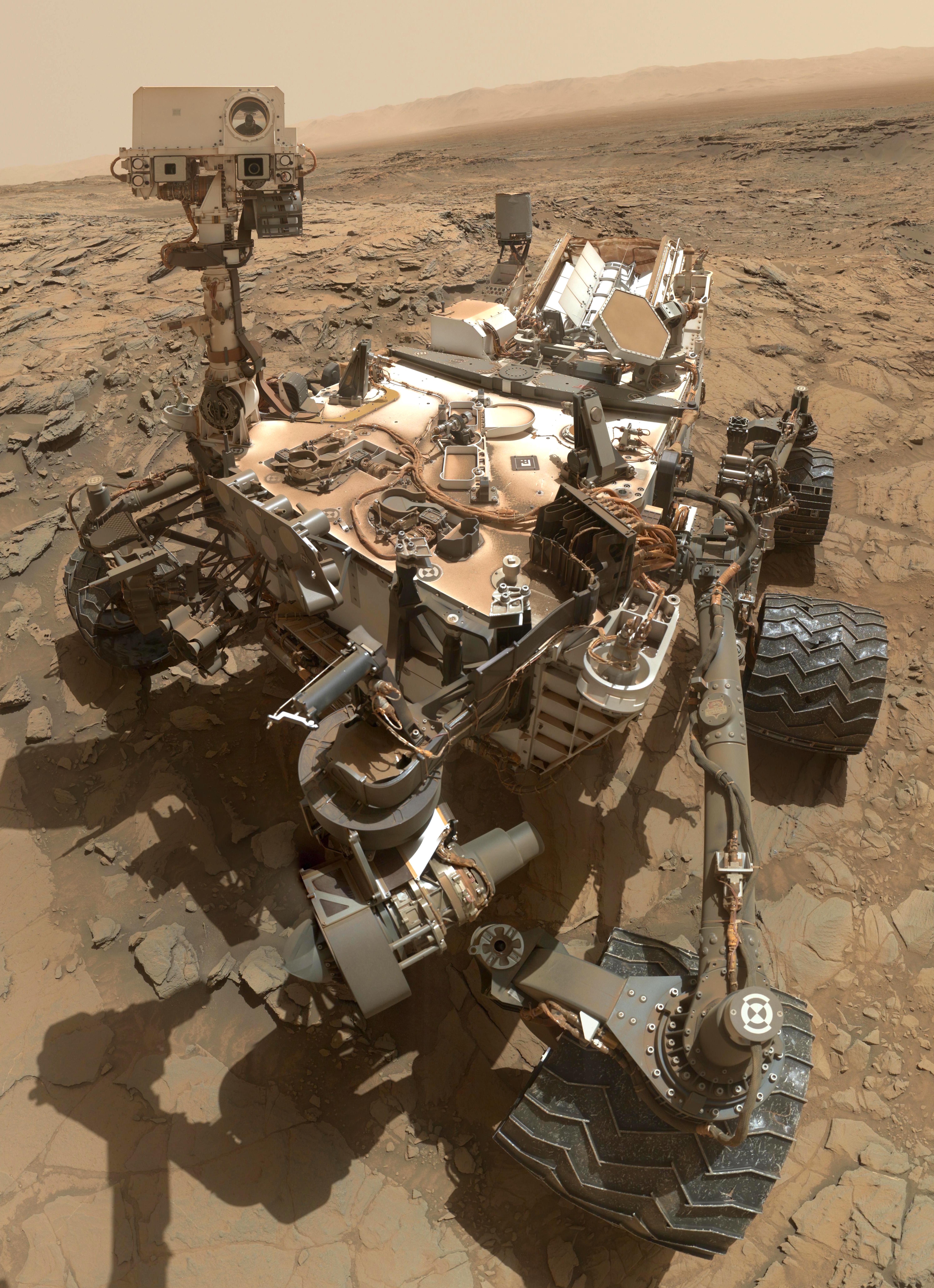The latest news from NASA’s Mars Curiosity Rover provides evidence of life-supporting ingredients. If Mars could support life at one time, then it may be able to support life now. The findings excite Mars enthusiasts and researchers.
When scientists at NASA envisioned the Mars Curiosity Rover, they intended to analyze the surface of Mars to learn as much as they can about the Gale Crater. The central question was whether the crater ever offered an environment favorable for microbes.
Currently, the rover is climbing a Martian mountain and gathering evidence for the changes in ancient lakes and wet underground environments over the course of billions of years. These changes are thought to have created more diverse chemical conditions that may have affected their favorability for life on the microbial scale.
The rover is finding and analyzing materials like hematite, clay minerals, and boron in uphill layers and comparing them to old segments that it has already examined. By comparing this data, scientists can discuss what the variations can tell us about how groundwater may have moved through those layers, transporting and altering chemical ingredients as they went.

The information they are getting from the rover is monumental. According to John Grotzinger of Caltech in Pasadena, there multiple variations at different elevations, and Grotzinger notes that they have “hit a jackpot” of information. With it, the team will learn more about the Martian surface through the study of its sedimentary basins.
Mars Curiosity Rover Finds a Possible ‘Chemical Reactor’
The Mars Curiosity Rover evidence suggests Mars may have supported life due to what Grotzinger calls a ‘chemical reactor.’ He notes that in a sedimentary basin, “elements get rearranged. New minerals form and old ones dissolve. Electrons get redistributed. On Earth, these reactions support life.”
The Gale Crater offers geological layering that is exposed in the lower portion of its central mound, called Mount Sharp. Scientists can use those layers to create a record of the environmental conditions present at different stages of early Martian history. Each layer being newer than the one beneath it.
The rover’s first year was a success because it found that an ancient Martian lake had all the essential chemicals needed for life. It also found the kind of chemical energy that was available for life. By climbing lower down Mount Sharp, investigators hope to see how those ancient environmental conditions changed over the course of billions of years. The initial layers that the team has analyzed have provided adequate results, so now the team is going to drill at regular intervals to create a complete picture of the chemical composition of the crater.
The rover's first year was a success because it found that an ancient Martian lake had all the essential chemicals needed for life.Click To TweetFour drilling sites have been spaced about 80 feet apart in elevation, and the pattern allows scientists to sample the progressively younger layers that tell them about Mount Sharp’s environmental history.
Analyzing Ancient Conditions
The mineral hematite may be a key to the changing ancient conditions that the team is investigating. Hematite has become the dominant iron oxide encountered by Curiosity recently, and this may suggest either warmer conditions or more interaction between the atmosphere and the sediments, according to Thomas Bristow of the NASA Ames Research Center. Previously, the rover mainly collected magnetite, and an increase in hematite relative to magnetite can indicate changes in the ancient environment of Mars.
Curiosity has also been encountering boron within mineral veins that mainly contain calcium sulfate. While this is the first time that any mission has detected boron on Mars, the traces of the element only make up about one-tenth of one percent of the rock composition.
Researchers often associate boron with places where bodies of water have evaporated away. However, traces of the element are less straightforward indications of a changing environment than the increase in hematite. Despite being found in such minimal quantities, the boron within the layers indicates that Mount Sharp contained a dynamic system of chemicals, which is what shows the potential for life on the Martian surface.
Two Possibilities for a ‘Dynamic System’
Scientists are considering two possible options to explain the presence of boron, which was presumably left behind by groundwater.
One possibility is that the evaporation of a lake formed a deposit in an overlying layer containing boron. Later, that boron would have been dissolved by water and carried down through a fracture network into the older layers that the Mars Curiosity Rover encountered, accumulating along with fracture-filling vein minerals.
“One possibility is that the evaporation of a lake formed a deposit in an overlying layer containing boron.”
Another possibility is that changes in the chemistry of clay-bearing deposits such as hematite affected how groundwater carried boron within the local sediments.
Whatever the actual explanation is, Grotzinger notes that “Variations in these minerals and elements indicate a dynamic system.” He also mentioned that in this system, the water could influence the chemistry of the clay. The composition of the water changes as well, giving the minerals left behind a chemical complexity that indicates a long, interactive history with water. A complex chemistry implies better habitability. So, the presence of boron, hematite, and clay minerals means that the Martian surface may be suitable for supporting life.
While the findings indicate that Mars may support life, it is important to note that the rover has found no tangible evidence of life on Mars. With any luck, the prospects of beginning a new cycle of life on the red planet will improve the more we learn about the composition of its surface.



















Investment is one of the best ways to achieve financial freedom. For a beginner there are so many challenges you face. It’s hard to know how to get started. Trading on the Cryptocurrency market has really been a life changer for me. I almost gave up on crypto at some point not until saw a recommendation on Elon musk successfully success story and I got a proficient trader/broker Mr Bernie Doran , he gave me all the information required to succeed in trading. I made more profit than I could ever imagine. I’m not here to converse much but to share my testimony; I have made total returns of $10,500.00 from an investment of just $1000.00 within 1 week. Thanks to Mr Bernie I’m really grateful,I have been able to make a great returns trading with his signals and strategies .I urge anyone interested in INVESTMENT to take bold step in investing in the Cryptocurrency Market, he can also help you RECOVER your lost/stolen Cryptocurrencies. you can reach him on WhatsApp : + 1 (424) 285 – 0682 or his Gmail : BERNIEDORANSIGNALS @ GMAIL . COM bitcoin is taking over the world, tell him I referred you